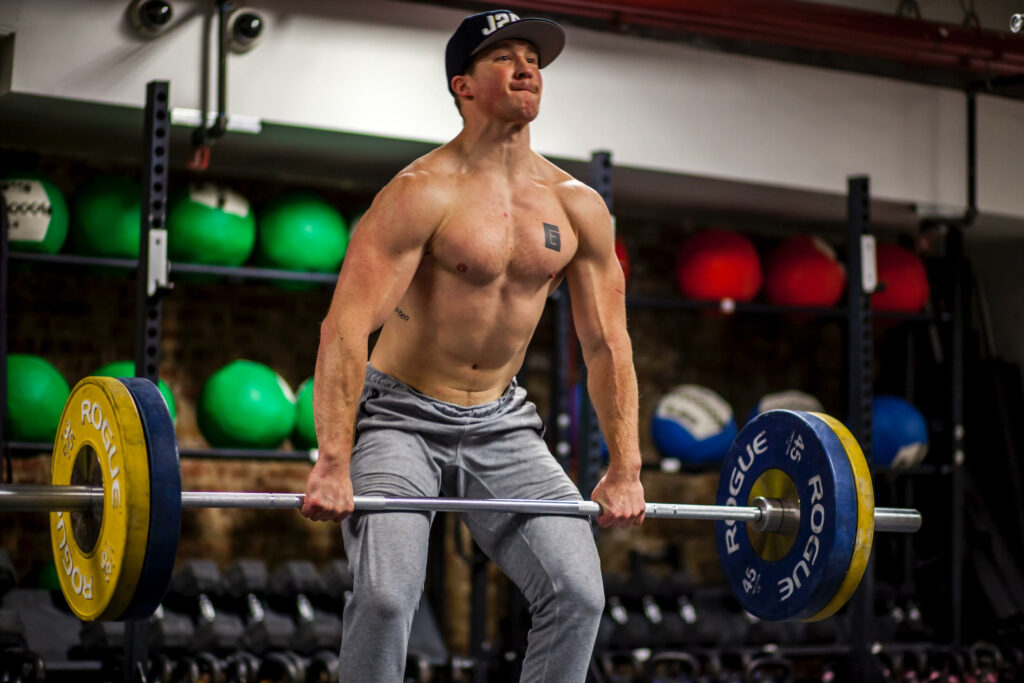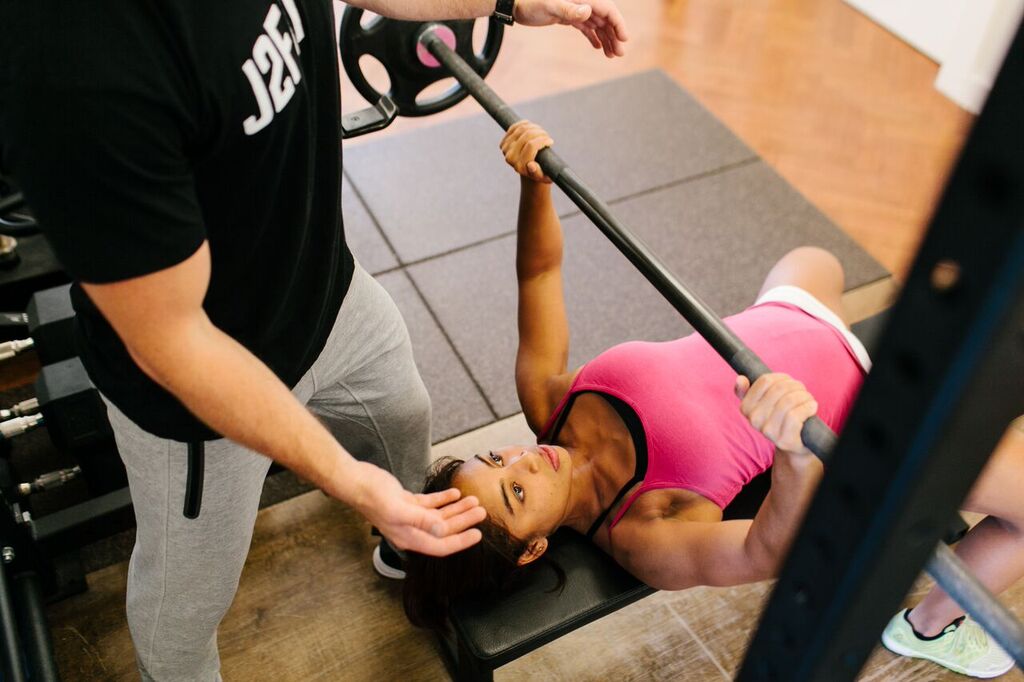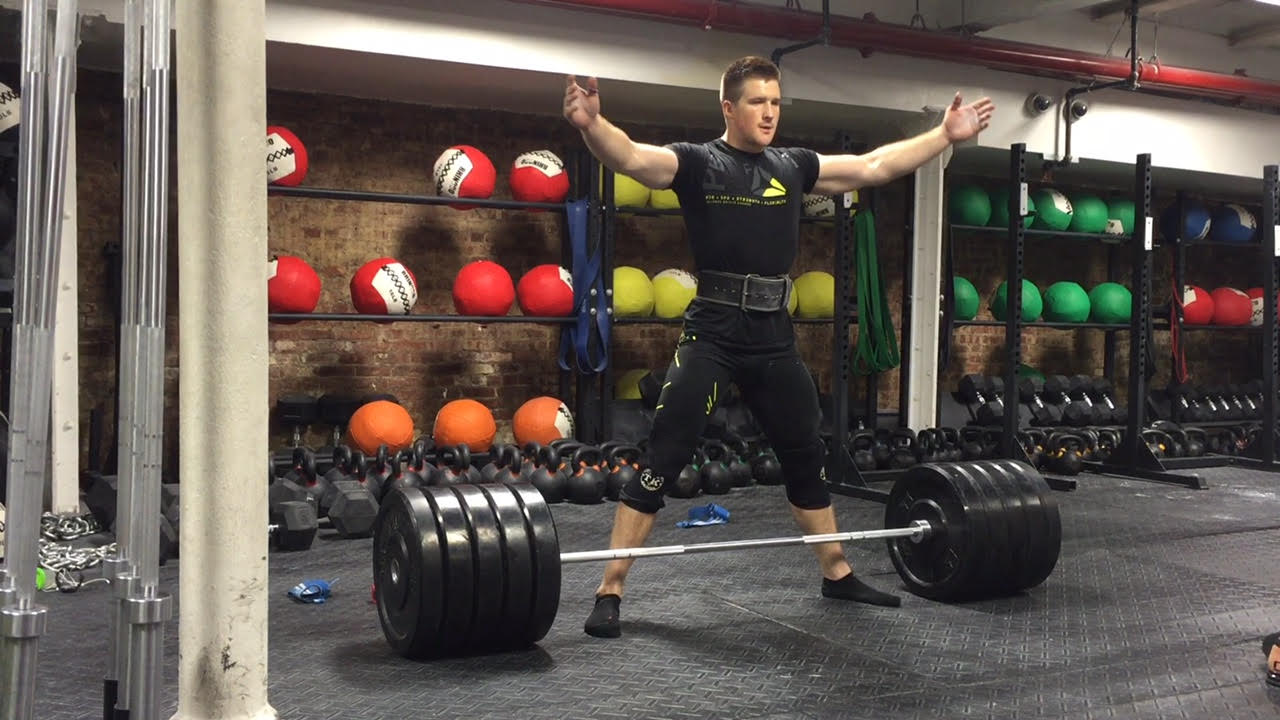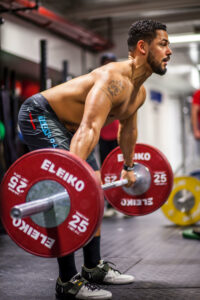Like it or not, hypertrophy training (sometimes only seen as bodybuilding programs) can be very beneficial to fitness athletes and CrossFitters, possibly even necessary for long-term muscular growth, strength gains, increased athletic potential, and injury resilience.
Most of us are very familiar with standard bodybuilding programs: Leg days, bicep curls, and super sets. What many fail to see is that the science behind the training regimens of bodybuilding greats Arnold Schwarzenegger, Jay Cutler, and Ronnie Coleman can improve fitness performance across the board.
The Science of More Muscle
Muscular hypertrophy is the process of muscle tissues growing in diameter (size), resulting in a plethora of beneficial performance outcomes:
- Increased muscle fiber size: If you have to muscles with all other things the same, just one is “bigger”; bigger muscles are (generally) stronger muscles.
- Increased explosive strength and power capacity in the lower extremities: The increase in muscle fiber alignment and growth leads way to increased power production and fore development when these newly formed muscles are trained explosively.
- Increased work capacity: Multiple research studies have shown improved work capacity and performance improvements in cyclists, runners, and other athletes following a heavy strength training regimen.
- Few (if any) detrimental effects on endurance capacity: Research suggest that 12-weeks of heavy resistance training has no significant effect on endurance capacity in athletes.
- Decreased body fat: The more muscle you have, the higher your metabolism is. Swapping 1lb of fat for 1lb of muscle could help you burn nearly 4-6 additional calories per day/lb. You do the math…
- Increased fat oxidation and glucose sparing: This is critical for high intensity sports and WODs. As you train above your ventilatory/lactate threshold (roughly 75-80% of Heart Rate Max in trained adults), your body shifts to use glucose (sugars found in the blood and muscle tissues) for energy. Unlike stored fat, glucose stores are not finite, therefore the longer you can forgo using those stored glucose, the better you will be at performing high power and force output exercise.
- Increase in fast twitch (type IIa and IIb) muscle fibers: Not surprisingly, research shows that high intensity loading (60% RM) produces greater development of fast twitch muscle fibers when compared to lower intensity (30% RM) training.The fast twitch muscle fibers reign supreme in nearly every athletic endeavor, except long endurance training (ultramarathons, marathons, centurions. etc). The properties of fast twitch muscle fibers will promote optimal performance foundations.
When To Do A Hypertrophy-Based Training Cycle
Every new macrocycle (in this case, yearly program cycle) should start with a foundational hypertrophy and general physical preparedness phase. Following the competitive fitness season, a few training cycles (4-12 weeks) can be devoted to hypertrophy based training to promote:
- Repair their central nervous systems: The high demands of a sports season (Open workouts, etc) can wreak havoc on the neuromuscular system if not allowed to recover from the high stress of competition. Athletes, oddly enough, are more susceptible to overtraining and detrimental long-term plateaus if not careful during post competition seasons, as they are closer to their genetic potential. The close to that potential, the easier it is to overshoot and injure yourself.
- Deload the joints, ligaments, and connective tissues: High impact training, maximal loading and PR attempts under fatigue, and inadequate full recovery throughout a competitive season increases the strain and demands placed upon your structures. Hypertrophy training inherently prescribed loading percentages of roughly 50-80% of an athlete’s 1-rep max, for moderate repetitions, allowing for structural deloading and repair.
- Build a stronger foundation for the future: Hypertrophy training has repeatedly shown to increase muscle fiber size, fiber alignment (better alignment equals greater force production), and recruitment of fast twitch muscle fibers. The ability to gain more “trainable” muscle in this phase will allow you to train for power, speed, and endurance better as the year goes on. Simply put, the more muscle fibers you have, and the bigger they are; the more powerful you fitness capacity will be.
Time To Train: 3 Sample Hypertrophy Programs Build Muscle and Get Fit(ter)
As athletes, a standard hypertrophy based program won’t do the trick. Due to the inherent demands of competitive fitness, you still need to increase your work capacity, mobility, and general athleticism. Performing hypertrophy based conditioning programs that work to develop the necessary muscle tissue and cardiovascular adaptations you need in the off-season will set you up for success the next time a competition comes your way. Below, I have detailed out two programs that I have created (one free and one paid) to deliver hypertrophy and strength results for CrossFit competitors and fitness athletes alike:
- 9-Week Strength and Hypertrophy Training Cycle (FREE): This program is a high volume based training for muscle gain and foundational strength. Additionally, the addition of olympic weightlifting movements at moderate loading is ideal for athletes looking to increase power production, technique, and barbell cycling capacity.
- LEAN STRENGTH: 8-Week Barbell Hypertrophy Program ($50): “Lean Strength” is my fully customizable 8-week training program filled with squatting, deadlifting, and pressing. The addition of an eBook training manual outlining conditioning and nutrition throughout the program is ideal for athletes looking to gain muscle and strength, lose body fat, and get better at the foundational barbell lifts.
- 8-Week Olympic Weightlifting Strength Cycle ($50): If you are looking to build a foundation for Olympic Weightlifting, become powerful, and gain lean mass in the process, then you’ll love this 8-week training program. It does not matter if you’ve competed in events using these lifts, this program has proven to develop and elevate your performance.
What’s Next?
With newly formed lean muscle, enhanced fast twitch power and force production capacities, and an unlocked athletic potential, you can resume your pre-season training regimens to prep for the upcoming competitive athletic and fitness season.
[Editors note: This article is an op-ed. The views expressed herein are the authors and don’t necessarily reflect the views of BarBend. Claims, assertions, opinions, and quotes have been sourced exclusively by the author.]
References
Erksine, R., Fletcher, G., & Folland, J. (2014). The contribution of muscle hypertrophy to strength changes following resistance training. European Journal Of Applied Physiology, 114(6), 1239-1249. Retrieved March 31, 2016, from http://www.ncbi.nlm.nih.gov/pubmed/24610245
Farup, J., Kjølhede, T., Sørensen, H., Dalgas, U., Møller, A. B., Vestergaard, P. F., . . . Vissing, K. (2012). Muscle Morphological and Strength Adaptations to Endurance Vs.
Resistance Training. Journal of Strength and Conditioning Research, 26(2), 398-407. Baechle, T., & Earle, R. (2008). Essentials of Strength Training and Conditioning(3rd ed.). Champaign, IL: Human Kinetics.
Gjovaag, T. (2008). Effect of training with different intensities and volumes on muscle fibre enzyme activity and cross sectional area in the m. triceps brachii. European Journal Of Applied Physiology, 103(4), 399-409. Retrieved March 31, 2016, from http://eds.b.ebscohost.com/eds/detail/detail?vid=3&sid=4bc98090-4b71-4c57-98c4-3940a722a5ea@sessionmgr120&hid=108&bdata=JnNpdGU9ZWRzLWxpdmU=#AN=18351376&db=mnh
Select images courtesy Lisa Haefner.
The post Why Fitness Athletes Should Focus on Hypertrophy appeared first on BarBend.
from BarBend https://barbend.com/fitness-athletes-focus-hypertrophy/




No comments:
Post a Comment